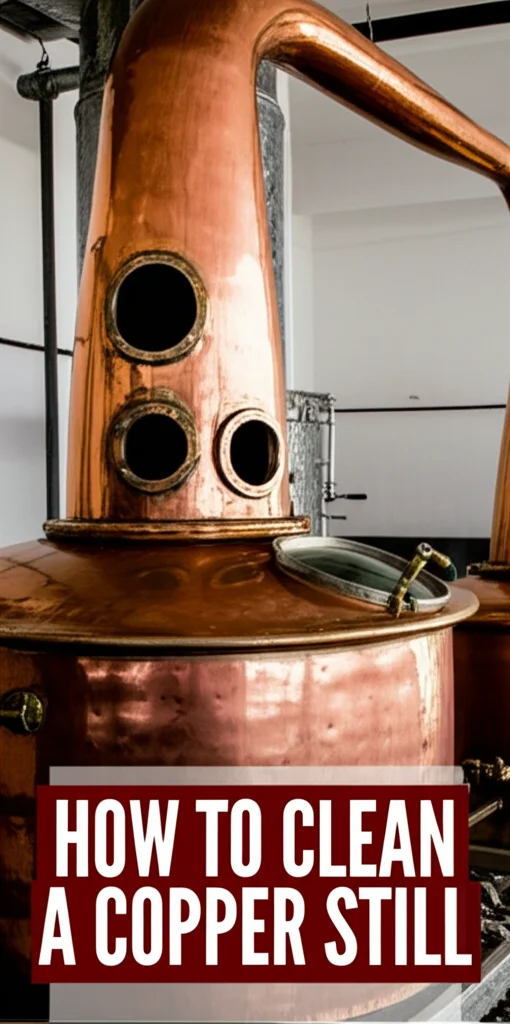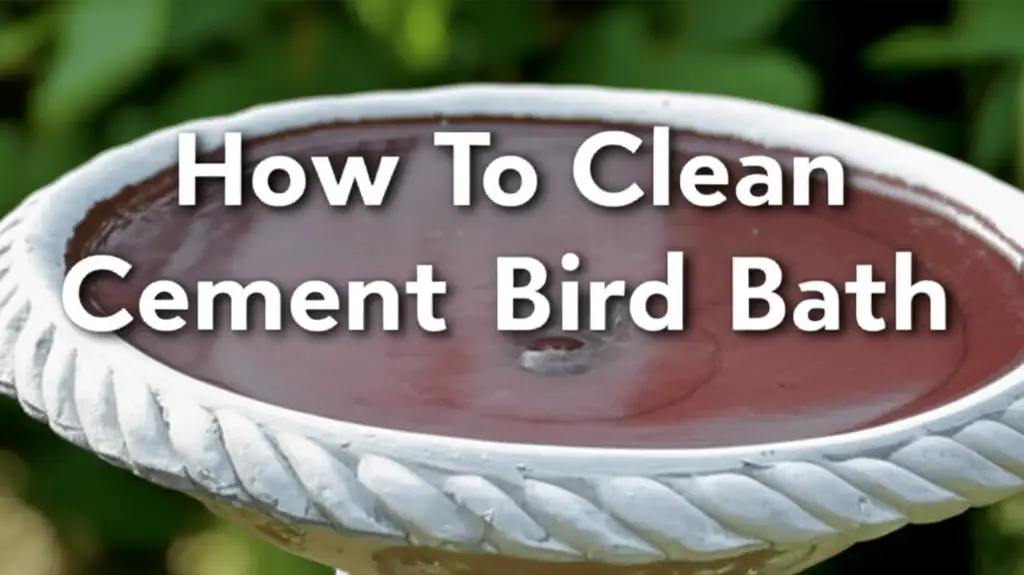· Home & Garden · 13 min read
How To Clean A Copper Still

How to Clean a Copper Still: Complete Maintenance Guide
Proper maintenance of your copper still is essential for producing high-quality spirits and extending the life of your distillation equipment. Cleaning a copper still requires careful attention to detail and the right techniques to preserve its functionality and appearance. Whether you’re a professional distiller or a home hobbyist, understanding how to properly clean your copper still will ensure optimal performance and longevity.
Quick Takeaway
- Clean your copper still after each use to prevent contamination and preserve flavor
- Use natural cleaning solutions like vinegar, lemon juice, or citric acid
- Always rinse thoroughly and allow to dry completely before storage
- Regular maintenance extends the life of your still and improves product quality
- Different components (column, condenser, pot) require specific cleaning approaches
In short: To clean a copper still, use a mixture of vinegar and water or citric acid solution, scrub gently with a non-abrasive brush, rinse thoroughly with clean water, and allow to dry completely before reassembly or storage.
Why Cleaning Your Copper Still Is Essential
Keeping your copper still clean isn’t just about appearances—it’s critical for the quality of your distilled spirits and the longevity of your equipment. Copper stills naturally accumulate residues during distillation, including:
- Mineral deposits from water
- Organic residues from fermentation
- Copper oxide (verdigris) from the copper surface reacting with air and moisture
- Sulfur compounds that copper helpfully removes from your spirits
If these residues are left to build up, they can affect the flavor profile of your spirits, reduce the efficiency of heat transfer during distillation, and potentially contaminate future batches. Over time, neglected cleaning can lead to permanent damage to your investment.
Proper cleaning after each run removes these residues and prevents them from affecting your next batch. It also gives you the opportunity to inspect your still for any issues that might need attention, such as leaks, corrosion, or loose fittings.
Essential Supplies for Cleaning a Copper Still
Before starting the cleaning process, gather these necessary supplies:
- Cleaning solutions:
- Distilled white vinegar
- Citric acid powder
- Lemon juice (fresh or bottled)
- PBW (Powdered Brewery Wash) for heavy-duty cleaning
- Tools:
- Soft-bristle brushes in various sizes
- Microfiber cloths
- Bottle brushes for narrow tubes
- Soft sponges (non-abrasive)
- Safety gear:
- Rubber gloves
- Safety glasses
- Well-ventilated area
Avoid using harsh chemicals, commercial copper cleaners with abrasives, or steel wool, as these can damage the copper surface and potentially leave harmful residues.
How to Clean a Copper Still with Citric Acid
Cleaning with citric acid is one of the most effective methods for maintaining your copper still. This natural acid dissolves mineral deposits and copper oxide without damaging the metal.
Step-by-Step Citric Acid Cleaning Process:
Disassemble the still completely, separating the pot, column, condenser, and other components.
Prepare the citric acid solution:
- Mix 1-2 tablespoons of citric acid powder per gallon of warm water
- Stir until completely dissolved
Clean the pot (boiler):
- Fill the pot about halfway with the citric acid solution
- Heat the solution to approximately 140°F (60°C)—hot but not boiling
- Let it sit for 15-30 minutes
- Use a soft brush to gently scrub the interior surfaces
- Drain and rinse thoroughly with clean water
For the column and condenser:
- Either submerge these parts in the citric acid solution or
- Use a pump to circulate the solution through them
- Allow the solution to work for 15-30 minutes
- Rinse thoroughly with clean water
For external surfaces:
- Apply the citric acid solution with a soft cloth
- Gently rub in a circular motion
- Rinse with clean water and dry with a soft cloth
Final rinse:
- Rinse all components with distilled water to prevent water spots
- Air dry completely before reassembly
This method is particularly effective for removing mineral deposits and light oxidation. For heavily oxidized copper, you may need to repeat the process or use a stronger solution.
How to Clean a Copper Still by Hand
For routine cleaning or when citric acid isn’t available, cleaning your still by hand with vinegar or lemon juice works well for maintaining your copper still’s appearance and functionality.
Manual Cleaning Method:
Create a cleaning paste:
- Mix equal parts salt and flour
- Add enough vinegar or lemon juice to form a paste
Apply the paste:
- Using a soft cloth or sponge, apply the paste to the copper surfaces
- Work in small sections with circular motions
- Pay special attention to areas with visible tarnish or residue
For stubborn spots:
- Cut a lemon in half and dip the cut side in salt
- Rub directly on the tarnished areas
- The combination of acid and mild abrasion helps lift tough residues
For interior surfaces:
- Use a mixture of equal parts vinegar and water
- Apply with a soft brush, reaching all interior surfaces
- For tight spaces, use a bottle brush or specialized cleaning tools
Rinse thoroughly:
- Use clean water to remove all traces of the cleaning solution
- For the interior, rinse multiple times to ensure no residue remains
Dry completely:
- Use clean, dry cloths to remove excess moisture
- Allow components to air dry completely before reassembly
This hand-cleaning method is excellent for regular maintenance and for addressing specific problem areas. It’s also gentler than some chemical methods, making it ideal for antique or particularly delicate copper stills.
Cleaning the Still Between Runs
If you’re planning multiple distillation runs in succession, you may not need a complete deep clean between each batch. However, a basic cleaning is still essential to prevent flavors from transferring between batches and to maintain quality.
Quick Cleaning Between Runs:
Rinse with hot water:
- Immediately after emptying the still, rinse all components with hot water
- This removes most residues before they can dry and adhere to surfaces
Vinegar rinse:
- After the hot water rinse, run a solution of 1 part vinegar to 4 parts water through the system
- This helps neutralize any remaining residues
Final water rinse:
- Run clean water through the system to remove all traces of vinegar
- Use distilled water for the final rinse to prevent mineral deposits
Inspect and spot clean:
- Examine components for any remaining residue
- Spot clean as needed with a soft brush and vinegar solution
Allow to dry completely if you’re not immediately starting another run
This between-runs cleaning process takes just 30-45 minutes but makes a significant difference in preventing cross-contamination between batches and reducing the need for more intensive cleaning later.
How to Clean a Copper Still Before First Use
New copper stills require special attention before their first use to remove manufacturing residues and prepare the surface for distillation. This process, sometimes called “seasoning,” is crucial for safe and quality spirit production.
Preparing a New Copper Still:
Initial inspection:
- Check all components for manufacturing debris
- Ensure all solder joints are clean and properly finished
- Verify that all parts fit together correctly
First cleaning:
- Create a solution of 1 part vinegar to 2 parts water
- Fill the pot halfway and assemble the still
- Heat the solution (but don’t boil) and run it through the system
- Discard this solution
Acid wash (optional but recommended):
- Prepare a weak citric acid solution (1 tablespoon per gallon)
- Run this solution through the assembled still
- This helps remove any remaining manufacturing oils or residues
Sacrificial run:
- Fill the pot with a mixture of equal parts water and vinegar
- Conduct a complete distillation run
- This “sacrificial run” helps clean the system and removes any remaining contaminants
- Discard the resulting liquid—it is not for consumption
Final rinse:
- Run clean water through the system
- Ensure all traces of cleaning solutions are removed
Dry thoroughly:
- Allow all components to dry completely before your first actual distillation
Taking these steps before your first use ensures that your spirits won’t be contaminated by manufacturing residues and helps to establish the proper chemical environment inside your still for quality distillation.
Cleaning Copper Still Packing and Components
The packing material in reflux stills and the various small components require special attention during cleaning to ensure optimal performance and longevity.
Cleaning Packing Material:
Remove all packing from the column
Soak in cleaning solution:
- For copper packing: Use a citric acid solution
- For ceramic, glass, or stainless steel packing: Use PBW cleaner or vinegar solution
- Allow to soak for 30-60 minutes
Rinse thoroughly with clean water
Inspect each piece for residue or damage before replacing
Cleaning Small Components:
Disassemble all removable parts:
- Thermometer ports
- Valves
- Sight glasses
- Gaskets and O-rings
Clean each component appropriately:
- Metal parts: Clean with citric acid or vinegar solution
- Rubber gaskets: Wash with mild soap and water
- Glass components: Clean with vinegar or mild detergent
Pay special attention to:
- Threads on fittings
- Small crevices where residue can accumulate
- Connection points where leaks might occur
Rinse all components thoroughly and allow to dry completely
Inspect for damage or wear before reassembly
For column packing specifically, it’s important to ensure all residues are removed, as these can significantly impact the efficiency of your still. Consider keeping a separate set of brushes dedicated to cleaning the packing to prevent cross-contamination.
How to Clean and Maintain Copper Still Fittings
The fittings on your copper still—including valves, connectors, and seals—often require special attention during cleaning to ensure they function properly and don’t develop leaks.
Cleaning and Maintaining Fittings:
Disassemble carefully:
- Take note of how parts fit together
- Consider taking photos before disassembly for reference
- Keep small parts organized
Clean threads and connections:
- Use a small brush dipped in vinegar solution
- Clean both male and female threads
- Pay special attention to valve interiors
Check for corrosion or damage:
- Inspect O-rings and gaskets for wear
- Look for signs of corrosion at connection points
- Check for mineral buildup inside valves
For threaded connections:
- Clean threads thoroughly
- Apply food-grade lubricant if necessary
- Ensure proper alignment when reassembling
For clamp connections:
- Clean the mating surfaces carefully
- Inspect gaskets for damage
- Ensure even tightening when reassembling
Properly maintained fittings prevent leaks, which can be both a safety hazard and affect the efficiency of your distillation process. Regular inspection and cleaning of these components can prevent costly repairs and downtime.
Preventing Tarnish and Long-Term Storage
If you plan to store your copper still for an extended period, taking a few extra steps can prevent oxidation and ensure it’s ready for use when you need it.
Preventing Tarnish During Storage:
Clean thoroughly using one of the methods described above
Apply a protective coating:
- For exterior surfaces, a light coat of olive oil can prevent oxidation
- Wipe on with a soft cloth and remove any excess
- Focus on areas prone to tarnishing
Storage environment:
- Store in a cool, dry place
- Avoid areas with high humidity
- Keep away from chemicals that might cause corrosion
Cover or seal:
- Cover with a breathable cloth (avoid plastic which can trap moisture)
- For longer storage, consider using desiccant packets near your still
- Store disassembled with components separated
Before next use:
- Remove the protective coating with a vinegar solution
- Rinse thoroughly
- Perform a sacrificial run if the still has been stored for many months
These preventive measures can significantly reduce the cleaning effort required when you’re ready to use your still again and help maintain the quality of your equipment over the long term.
Troubleshooting Common Cleaning Problems
Even with regular maintenance, you may encounter some common issues when cleaning your copper still. Here’s how to address them:
Stubborn Tarnish and Oxidation:
- Problem: Dark or greenish spots that won’t come off with regular cleaning
- Solution: Create a paste of equal parts salt, flour, and vinegar. Apply to the affected area, let sit for 15-30 minutes, then scrub gently and rinse.
Water Spots and Mineral Deposits:
- Problem: White or chalky residue, especially in areas with hard water
- Solution: Use a stronger citric acid solution (2-3 tablespoons per gallon) and soak for longer periods. For serious buildup, a diluted phosphoric acid solution may be necessary (follow manufacturer directions carefully).
Interior Buildup That Won’t Scrub Off:
- Problem: Residue inside the still that resists manual cleaning
- Solution: Fill the still with a 50/50 mixture of white vinegar and water, heat (but don’t boil), and let soak for several hours before draining and scrubbing.
Discoloration After Cleaning:
- Problem: Copper turns dull or develops a patina after cleaning
- Solution: This is normal oxidation. For a bright finish, polish with a mixture of lemon juice and baking soda, then rinse thoroughly.
Metallic Taste in Distillate:
- Problem: Your spirits have a metallic flavor after cleaning
- Solution: Your rinse may not have been thorough enough. Run a sacrificial batch of water through the still to remove any remaining cleaning solution.
Remember that some discoloration of copper is normal over time, and a slight patina can actually protect the metal. Focus your cleaning efforts on removing harmful residues rather than maintaining a perfectly shiny appearance.
Frequently Asked Questions
What to use to clean a copper still?
For regular cleaning, use natural solutions like white vinegar, lemon juice, or citric acid. These effectively remove tarnish and mineral deposits without damaging the copper or leaving harmful residues. For stubborn buildup, PBW (Powdered Brewery Wash) is effective but requires thorough rinsing afterward.
How to clean a still before use?
Before first use, clean your still with a vinegar solution (1 part vinegar to 2 parts water), running it through the entire system. Follow with a “sacrificial run” using a water-vinegar mixture that you’ll discard. For regular use, rinse thoroughly with hot water and verify no cleaning solution remains before distilling.
How do you clean the inside of a copper vessel?
Clean the inside of a copper vessel by filling it with a solution of citric acid (1-2 tablespoons per gallon) or equal parts vinegar and water. Heat the solution (don’t boil), let sit for 15-30 minutes, then scrub gently with a soft-bristle brush. Rinse thoroughly with clean water until all cleaning solution is removed.
How do you clean old copper?
Clean old copper by first removing loose debris, then apply a paste made from equal parts salt, flour, and vinegar. Work this into the surface with a soft cloth, let sit for 15-30 minutes, then rinse thoroughly. For heavily oxidized copper, you may need several applications or a stronger citric acid solution.
Is it necessary to clean a copper still after every use?
Yes, cleaning after each use prevents flavor contamination between batches, removes potentially harmful residues, and prevents permanent damage to the copper. At minimum, rinse thoroughly with hot water immediately after use, followed by a more thorough cleaning when time permits.
Can I use commercial copper cleaners on my still?
Most commercial copper cleaners are not recommended for stills used in food/beverage production as they may contain chemicals that could contaminate your spirits. Stick to food-safe cleaning methods using vinegar, citric acid, or specifically formulated brewing/distilling cleaners like PBW.
Final Words
Proper maintenance of your copper still is an investment in the quality of your spirits and the longevity of your equipment. Regular cleaning removes residues that could affect flavor, prevents corrosion and damage, and helps you identify potential problems before they become serious.
By developing a consistent cleaning routine and using the appropriate methods for your specific still, you’ll ensure optimal performance and the highest quality distillate. Whether you’re using natural cleaning solutions like vinegar and citric acid or specialized products like PBW, the key is thoroughness and attention to detail.
Remember that while the gleaming appearance of clean copper is aesthetically pleasing, the true measure of successful cleaning is the quality of your next batch of spirits. A well-maintained still is a joy to use and can last for generations with proper care.
If you’re new to distilling, don’t be intimidated by the cleaning process. Start with simple methods, be consistent with your maintenance, and you’ll quickly develop the skills needed to keep your equipment in peak condition. Your patience and diligence will be rewarded with superior spirits and a still that remains functional and beautiful for years to come.
For more cleaning guides, check out our articles on how to clean a copper water bottle or how to clean copper table surfaces to maintain all your copper items in pristine condition.
- copper still cleaning
- still maintenance
- distilling equipment
- copper care
- home distilling




